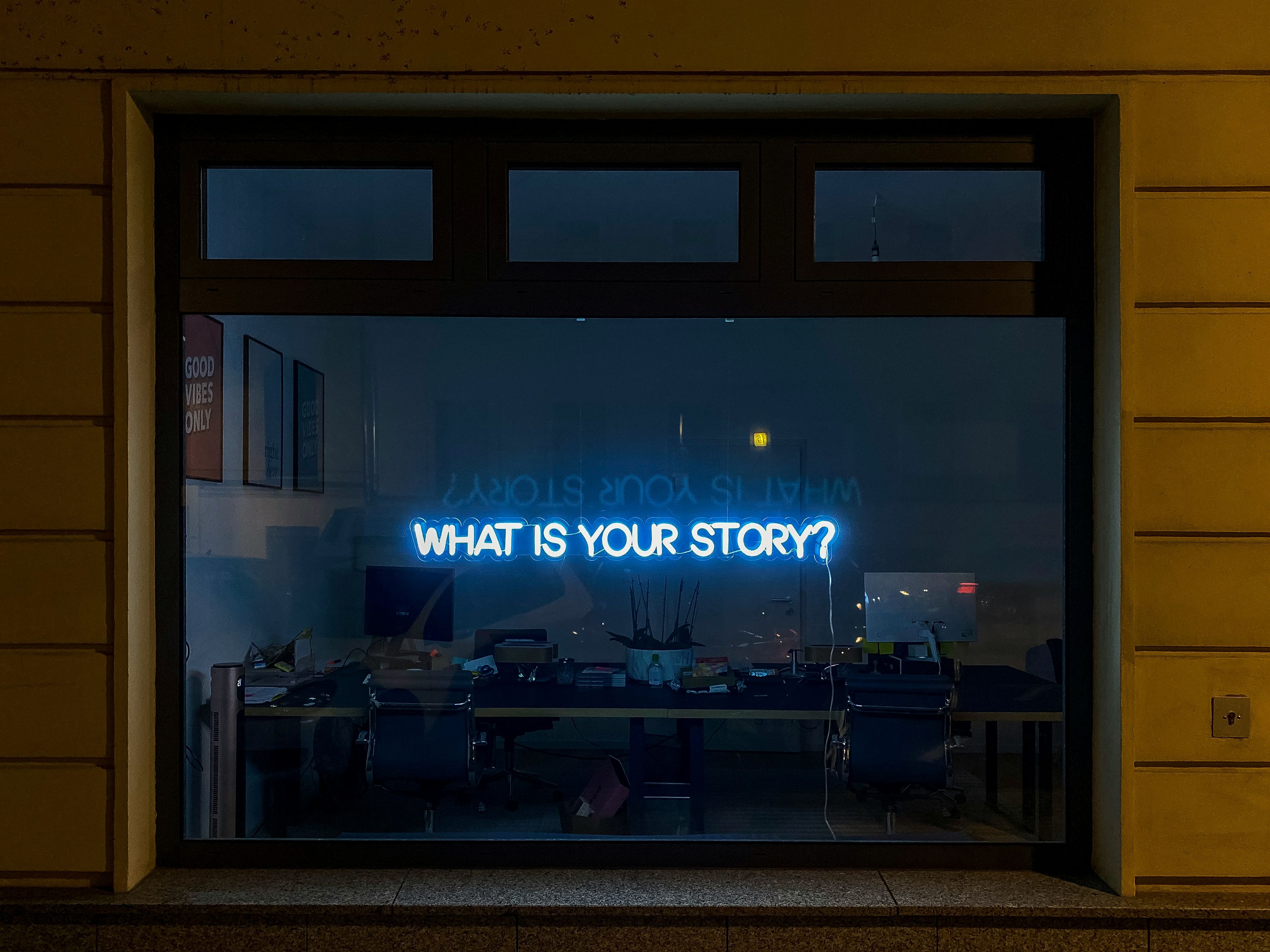Why Great B2B Storytelling Matters
B2B marketing is often written off as the sensible, spreadsheet-loving cousin of the flashier B2C world. But that’s selling it short. In a world flooded with sales pitches and jargon-filled PDFs, a relatable narrative can make the difference between becoming a trusted partner or getting lost in the inbox abyss.
Great storytelling – the kind that makes people lean in – works just as well (if not better) in the B2B space. Why? Because despite all the talk of “decision-makers” and “stakeholders,” B2B marketing is still all about the people. And people love a good story.
When done right, storytelling in B2B isn’t just about what you sell. It’s about creating a connection and showing the people behind the business why your solution fits their story.
B2B’s emotional landscape
There seems to be a long-standing assumption that B2B customers or “buyers” are super-logical, facts-first creatures. Sure, they love their data and KPIs, but let’s be real: nobody’s making purchasing decisions based purely on one chart. Humans are wired to make decisions emotionally and back them up with logic later, whether you’re selling software to a Fortune 500 or recommending a new restaurant to a friend.
Take Slack, for instance. When they broke into the scene, they didn’t bombard you with features or bore you with endless tech specs. Instead, they rolled out their “So Yeah, We Tried Slack…” campaign, a cheeky, offbeat mini-documentary showing an office team struggling to communicate and how Slack magically swoops in to save the day. It’s not just about the tool – it’s about the everyday experience of how it simplifies work life.
Suddenly, using Slack isn’t just a rational choice; it’s a way to feel like you’re part of a smart, efficient team. And that’s the magic of good storytelling.
Make your customer the hero
Every good story has a hero, and when it comes to B2B marketing, that hero isn’t you. It’s your customer. Your product or service? That’s the trusty sidekick. The one that appears just in time to help the hero solve a gnarly problem. And believe us, that distinction is crucial.
HubSpot is a master of this approach. Their customer success stories, like this one for ClassPlass, focus on real businesses that have used it to overcome their biggest challenges. Whether it’s scaling operations or streamlining marketing campaigns, HubSpot makes the customer the star of the show, with their platform playing the supportive, reliable Robin to their Batman. This narrative puts the focus on transformation, not technology, which resonates far more than a dry list of features.
Stories stick in a way stats don’t
Facts are forgettable, stories aren’t. There’s a reason people remember the plot of a book they read ten years ago but can’t recall a stat-heavy presentation they saw last month. Stories engage both the logical and emotional parts of the brain, making them sticky – they stay with you longer.
Take Mailchimp’s “Guess Less, Sell More” campaign. Rather than following a typical narrative structure with a clear brand journey, this campaign is intentionally abstract, using surreal and playful visuals to demonstrate how Mailchimp helps businesses make smarter, data-driven marketing decisions. By standing out with its quirky and unexpected approach, the campaign cuts through the noise as a prime example of how a different type of storytelling can still communicate the value of a product.
The “what’s in it for me?” factor
The best stories in B2B marketing don’t just entertain – they answer a fundamental question: “What’s in it for me?” A good narrative needs to resonate with your audience’s pain points and desires, and show how your product solves a problem in a way that’s clear, concise, and compelling.
For example, IBM’s “Outthink” campaign aimed to highlight how their AI and cognitive technologies were transforming industries. Rather than bogging viewers down with complex technical jargon, they used real-life success stories of businesses and industries that used IBM’s AI to solve large-scale challenges, from fighting cybercrime to improving healthcare outcomes, and showing the value of their solution.
Keep it real and relatable
It’s clear that authenticity goes a long way in B2B storytelling – nobody wants to hear about a business that’s perfect or – conversely – one that often messes up. What they do want is to hear about is how you’ve navigated challenges, because they’ve been there, too. By sharing real stories about overcoming hurdles or evolving with the market, you can build trust with your B2B customers and beyond.
Zendesk’s “I Like It When He Gives Me the Business” campaign is a masterclass in using humour to draw a cheeky parallel between customer service and marriage. The campaign shines a spotlight on the importance of communication and understanding in both customer service and business relationships. By framing their product in this way, Zendesk isn’t just pushing software; they’re tapping into those all-too-relatable human experiences that make people behind the purchasing decisions think, “Yep, I’ve been there.”
The bottom line? Tell your story strategically
The most successful brands understand that storytelling isn’t fluff – it’s a strategic tool. If you’re still relying on jargon and bullet points to get your message across, it’s time to rethink that approach.
Because in the world of B2B, stories are what people remember, and – in the end – it’s what helps them choose you over the competition. So get those creative juices flowing and start crafting narratives that resonate – your audience is waiting to connect with something real.


